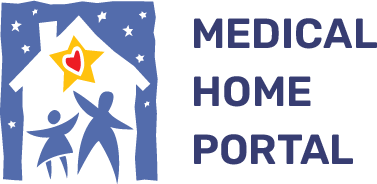Newborn Screening
Biotinidase Deficiency
Guidance for primary care clinicians receiving a positive newborn screen result
Screening
Description
Biotinidase is an autosomal recessive inherited disorder in which the body is unable to reuse and recycle biotin, a B complex vitamin found in foods such as liver, egg yolks, nuts, and milk. Biotinidase is responsible for extraction of biotin from ingested dietary sources and the breakdown of endogenous proteins. Biotin is an essential cofactor for several carboxylase enzymes that process proteins, fats, or carbohydrates. Variants in the BTD gene can be subcategorized as profoundly deficient (<10% activity) or partially deficient (10-30% activity). Typically, there are no symptoms until 3-4 months of life, distinguishing it from the related condition Holocarboxylase/Multiple Carboxylase Deficiency. Biotin therapy is highly effective.
Clinical Characteristics
- Seizures
- Hypotonia
- Eczematoid rash
- Alopecia
- Conjunctivitis
- Candidiasis
- Ataxia
- Hypoglycemia
- Paresis
- Developmental delay
- Neurosensory hearing loss
- Optic atrophy and scotomata
- Recurrent viral and fungal infections
Primary Care Management
Next Steps After a Positive Screen
- Contact the family and evaluate the infant for poor feeding, lethargy, or hypotonia. Most newborns are asymptomatic.
- Provide emergency treatment/referral if symptoms are present.
Confirming the Diagnosis
- To confirm the diagnosis of biotinidase deficiency, work with Newborn Screening Services (see NW providers [1]).
- Follow-up testing will include quantitative enzyme assay on serum/plasma. A panel of 5 common BTD mutations detects approximately 60% of disease-causing mutations and can identify a specific mutation responsible for partial biotinidase deficiency (p.D444H). Full-gene sequencing is available and can identify up to 99% of causative mutations.
- Genetic testing is possible for at-risk family members who may develop late-onset symptoms. Carriers can be diagnosed with 95% accuracy by enzyme assay, but DNA testing is superior for this purpose.
If the Diagnosis is Confirmed
- For evaluation and ongoing collaborative management, consult Medical Genetics (see NW providers [1]).
- Educate the family regarding signs, symptoms, and the need for urgent care when the infant becomes ill.
- Start oral biotin at 5mg bid and ensure continuation for life in patients with profound biotinidase deficiency. Patients with partial deficiency might require lower doses after the first year of life.
- For those identified after irreversible consequences, assist in management, particularly with low vision aids, hearing aids or cochlear implants, developmental and educational interventions.
Resources
Information & Support
Related Portal Content
Biotinidase Deficiency
Assessment and management information for the primary care
clinician caring for the child with biotinidase deficiency.
Biotinidase Deficiency (FAQ)
Answers to questions families often have about caring for their
child with biotinidase deficiency.
Holocarboxylase/Multiple Carboxylase Deficiency
Immediate clinical response for this related newborn condition.
Developmental Screening
Screening guidelines and tools.
Intellectual Disability & Global Developmental Delay
Assessment and management information for the primary care
clinician caring for the child with global developmental delay or intellectual disability.
Intellectual Disability and Global Developmental Delay (FAQ)
Answers to questions families often have about caring for their
child with global developmental delay or intellectual disability.
Hearing Screening
Screening guidelines and tools.
For Professionals
Biotinidase Deficiency (GeneReviews)
Detailed information addressing clinical characteristics, diagnosis/testing, management, genetic counseling, and molecular
pathogenesis; from the University of Washington and the National Library of Medicine.
Resources for Biotinidase Deficiency (Disease InfoSearch)
Compilation of information, articles, and links to support.
For Parents and Patients
Biotinidase Deficiency (MedlinePlus)
Information for families that includes description, frequency, causes, inheritance, other names, and additional resources;
from the National Library of Medicine.
Baby's First Test (Genetic Alliance)
Clearinghouse for local, state, and national newborn screening education, programs, policies, and resources. Also, provides
many ways for people to connect and share their viewpoints and questions about newborn screening, supported by the U.S. Department
of Health and Human Services.
Tools
ACT Sheet for Absent/Reduced Biotinidase Activity (ACMG) ( 400 KB)
400 KB)
Contains short-term recommendations for clinical follow-up of the newborn who has screened positive; American College of Medical
Genetics.
Confirmatory Algorithm for Biotinidase Deficiency (ACMG) ( 224 KB)
224 KB)
An algorithm of the basic steps involved in determining the final diagnosis of an infant with a positive newborn screen; American
College of Medical Genetics.
Services for Patients & Families Nationwide (NW)
| Service Categories | # of providers* in: | NW | Partner states (4) (show) | | NM | NV | RI | UT | |
|---|---|---|---|---|---|---|---|---|---|
| Medical Genetics | 1 | 2 | 5 | 4 | 7 | ||||
| Newborn Screening Services | 1 | 3 | 2 | 2 | 3 | ||||
For services not listed above, browse our Services categories or search our database.
* number of provider listings may vary by how states categorize services, whether providers are listed by organization or individual, how services are organized in the state, and other factors; Nationwide (NW) providers are generally limited to web-based services, provider locator services, and organizations that serve children from across the nation.
Helpful Articles
PubMed search on biotinidase deficiency and neonatal screening, last 8 years.
Wolf B.
Clinical issues and frequent questions about biotinidase deficiency.
Mol Genet Metab.
2010;100(1):6-13.
PubMed abstract
Authors & Reviewers
| Author: | Brian J. Shayota, MD, MPH |
| Reviewer: | Nancy C. Rose, MD |
| 2023: update: Brian J. Shayota, MD, MPHA |
| 2015: update: Kimberly Hart, MS, LCGCA |
| 2012: update: Kimberly Hart, MS, LCGCA |
| 2007: first version: Nicola Longo, MD, Ph.D.A |
Page Bibliography
Wolf B.
Clinical issues and frequent questions about biotinidase deficiency.
Mol Genet Metab.
2010;100(1):6-13.
PubMed abstract

